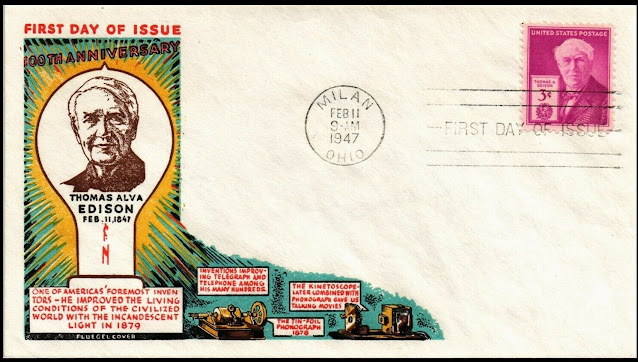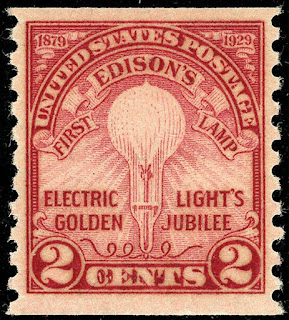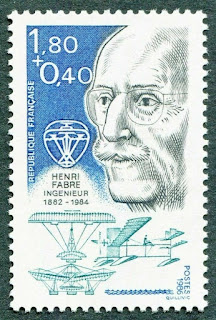Here are some events that happened on November 29th. It could be an event or a person that died or was born on that day
1803 Born: Christian Doppler, Austrian mathematician and physicist (d. 1853)
Christian Andreas Doppler (29 November 1803 – 17 March 1853) was an Austrian mathematician and physicist. He is celebrated for his principle – known as the Doppler effect – that the observed frequency of a wave depends on the relative speed of the source and the observer. He used this concept to explain the color of binary stars.
The Doppler effect (or the Doppler shift) is the change in frequency of a wave in relation to an observer who is moving relative to the wave source. It is named after the Austrian physicist Christian Doppler, who described the phenomenon in 1842.
A common example of Doppler shift is the change of pitch heard when a vehicle sounding a horn approaches and recedes from an observer. Compared to the emitted frequency, the received frequency is higher during the approach, identical at the instant of passing by, and lower during the recession.
The reason for the Doppler effect is that when the source of the waves is moving towards the observer, each successive wave crest is emitted from a position closer to the observer than the crest of the previous wave. Therefore, each wave takes slightly less time to reach the observer than the previous wave. Hence, the time between the arrivals of successive wave crests at the observer is reduced, causing an increase in the frequency. While they are traveling, the distance between successive wave fronts is reduced, so the waves "bunch together". Conversely, if the source of waves is moving away from the observer, each wave is emitted from a position farther from the observer than the previous wave, so the arrival time between successive waves is increased, reducing the frequency. The distance between successive wave fronts is then increased, so the waves "spread out".
For waves that propagate in a medium, such as sound waves, the velocity of the observer and of the source are relative to the medium in which the waves are transmitted. The total Doppler effect may therefore result from motion of the source, motion of the observer, or motion of the medium. Each of these effects is analyzed separately. For waves which do not require a medium, such as light or gravity in general relativity, only the relative difference in velocity between the observer and the source needs to be considered.
Austrian stamp depicting Doppler
1877 – Thomas Edison demonstrates his phonograph for the first time.
Thomas Alva Edison (February 11, 1847 – October 18, 1931) was an American inventor and businessman who has been described as America's greatest inventor. He developed many devices in fields such as electric power generation, mass communication, sound recording, and motion pictures. These inventions, which include the phonograph, the motion picture camera, and early versions of the electric light bulb, have had a widespread impact on the modern industrialized world. He was one of the first inventors to apply the principles of organized science and teamwork to the process of invention, working with many researchers and employees. He established the first industrial research laboratory.
Edison was raised in the American Midwest; early in his career he worked as a telegraph operator, which inspired some of his earliest inventions. In 1876, he established his first laboratory facility in Menlo Park, New Jersey, where many of his early inventions were developed. He later established a botanic laboratory in Fort Myers, Florida in collaboration with businessmen Henry Ford and Harvey S. Firestone, and a laboratory in West Orange, New Jersey that featured the world's first film studio, the Black Maria. He was a prolific inventor, holding 1,093 US patents in his name, as well as patents in other countries. Edison married twice and fathered six children. He died in 1931 of complications of diabetes.
US and Hungarian stamp featuring Edison and or his inventions
1882 Born: Henri Fabre, French pilot and engineer (d. 1984)
Henri Fabre (29 November 1882 – 30 June 1984) was a French aviator and the inventor of the first successful seaplane, the Fabre Hydravion.
Henri Fabre was born into a prominent family of shipowners in the city of Marseille. He was educated in the Jesuit College of Marseilles where he undertook advanced studies in sciences.
He intensively studied aeroplane and propeller designs. He patented a system of flotation devices which he used when he succeeded in taking off from the surface of the Etang de Berre on 28 March 1910. On that day, he completed four consecutive flights, the longest about 600 metres. the Hydravion has survived and is displayed in the Musée de l'Air in Paris. Henri Fabre was soon contacted by Glenn Curtiss and Gabriel Voisin who used his invention to develop their own seaplanes.
As late as 1971, Fabre he was still sailing his own boat single-handedly in Marseille harbour.
He died at the age of 101 as one of the last living pioneers of human flight.
French stamps depicting Henri Fabre
1945 – The Federal People's Republic of Yugoslavia is declared.
The Socialist Federal Republic of Yugoslavia, commonly referred to as SFR Yugoslavia or simply Yugoslavia, was a country in Southeast and Central Europe that existed from its foundation in the aftermath of World War II until its dissolution in 1992 amid the Yugoslav Wars. Covering an area of 255,804 km2 (98,766 sq mi), the SFRY was bordered by the Adriatic Sea and Italy to the west, Austria and Hungary to the north, Bulgaria and Romania to the east, and Albania and Greece to the south. The nation was a socialist state and a federation governed by the League of Communists of Yugoslavia and made up of six socialist republics – Bosnia and Herzegovina, Croatia, Macedonia, Montenegro, Serbia, and Slovenia – with Belgrade as its capital. In addition, it included two autonomous provinces within Serbia: Kosovo and Vojvodina. The SFRY's origin is traced to 26 November 1942, when the Anti-Fascist Council for the National Liberation of Yugoslavia was formed during World War II.
On 29 November 1945, the Federal People's Republic of Yugoslavia was proclaimed after the deposition of King Peter II, thus ending the monarchy. Until 1948, the new communist government originally sided with the Eastern Bloc under the leadership of Josip Broz Tito at the beginning of the Cold War, but after the Tito–Stalin split of 1948, Yugoslavia pursued a policy of neutrality. It became one of the founding members of the Non-Aligned Movement, and transitioned from a command economy to market-based socialism. The SFRY maintained neutrality during the Cold War as part of its foreign policy. It was a founding member of CERN, the United Nations, Non-Aligned Movement, OSCE, IFAD, WTO, Eutelsat, and BTWC. Following the death of Tito on 4 May 1980, the Yugoslav economy started to collapse, which increased unemployment and inflation. The economic crisis led to a rise in ethnic nationalism in the late 1980s and early 1990s; dissidence resulted among the multiple ethnicities within the constituent republics.
With the collapse of communism in Eastern Europe, inter-republic talks on transformation of the federation into a confederation also failed, with the two wealthiest republics (Croatia and Slovenia) seceding. In 1991 some European states recognized their independence. The federation collapsed along borders of federated republics, followed by the start of the Yugoslav Wars, and the final downfall and breakup of the federation on 27 April 1992. Two of its republics, Serbia and Montenegro, remained within a reconstituted state known as the "Federal Republic of Yugoslavia", or FR Yugoslavia, but this state was not recognized internationally as the official successor state to SFR Yugoslavia. The term former Yugoslavia is now commonly used retrospectively.
Stamps issued after the Socialist Federal Republic of Yugoslavia was declared









No comments:
Post a Comment